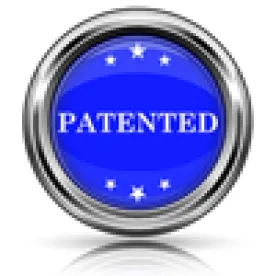Takeaway: Declaration testimony that repeats the statements presented in the petition without citing any evidence itself is not persuasive.
In its Decision, the Board denied institution of inter partes review of claims 1-18 of the ‘636 patent. The ’636 patent “discloses pharmaceutical compositions ‘that provide for the coordinated release of an acid inhibitor and a non-steroidal anti-inflammatory drug (NSAID)’ (id. at 1:22–24), such that there is ‘a reduced likelihood of causing unwanted side effects, especially gastrointestinal side effects, when administered as a treatment for pain.’”
As an initial matter, the Board determined that no claim term required an express construction.
The Board then discussed the prior art references. “Goldman teaches that ‘[t]he symptoms of overindulgence due to excessive or inappropriate intake of food and/or alcoholic beverage are well known and include headache as well as indigestion, upper abdominal discomfort, bloating, heartburn or pyrosis.’” “Remington discusses generally the production of oral solid dosage forms, such as tablets and capsules, and the many considerations that influence the choice of a particular dosage form.” “Lindberg discloses omeprazole and its optically pure crystalline enantiomeric salts, including a magnesium salt of S-omeprazole, esomeprazole,8 in the form of a ‘dosage unit.’” “Gimet teaches that NSAIDs have ‘high therapeutic value especially for the treatment of inflammatory conditions such as . . . osteoarthritis (OA) and rheumatoid arthritis,’ but ‘also exhibit undesirable side effects.’” “Ouali discloses ‘a composition for administering an NSAID wherein the undesirable gastrointestinal side effects of the drug are minimized but wherein the drug’s therapeutic effectiveness is maintained.’” “Ouali discloses ‘a composition for administering an NSAID wherein the undesirable gastrointestinal side effects of the drug are minimized but wherein the drug’s therapeutic effectiveness is maintained.’”
The Board analyzed Petitioner’s challenges. The Board first found “that Petitioner has not established that the teachings of Goldman, Remington, and Lindberg would have given an ordinary artisan a reason to formulate a tablet or capsule with the structural and functional features required by the challenged claims.” “Petitioner does not point to anything in Goldman that describes or suggests adequately why one would have prepared, for any reason, a composition as claimed, where at least some PPI (i.e., esomeprazole) is released regardless of pH and the release of at least some NSAID (i.e., naproxen) is inhibited unless the pH is 3.5 or higher (e.g., via a coating).” And “although Goldman incorporates Remington’s discussion of oral solid dosage form by reference . . . Petitioner does not identify anything in Goldman that points to any particular dosage form among the many disclosed by Remington” and “Goldman’s citation to Remington generally in relation to ‘[v]arious conventional techniques for preparing medicament tablets or caplets’ does not persuade us that an ordinary artisan would have made the connection that Petitioner contends.”
As for Petitioner’s assertion regarding “predictable results” in relation to NSAIDs, the only evidence Petitioner cites is Dr. Shargel’s Declaration “which repeats the statements presented in the Petition on this point, without citing any evidence itself.” However, conclusory assertions merely repeated and supported are not persuasive. See 37 C.F.R. § 42.65(a). The Board was not persuaded “that Petitioner establishes adequately that esomeprazole administered in a non-enteric-coated form (thereby allowing it to be released regardless of pH) would have obtained ‘improved pharmacokinetic, metabolic, and therapeutic properties’ as compared to misoprostol in any formulation.” And “Petitioner has not explained adequately why one would have had reason to make the composition taught in Gimet, e.g., in Figure 2, with a PPI rather than a prostaglandin in ‘mantle 22’ located on the outside of ‘enteric coating 20’ surrounding ‘inner core 18’ of an NSAID.” In particular, the Board stated:
Petitioner does not address teachings in the art indicating that PPIs were acid liable, nor explain adequately why one would have used any PPI (much less esomeprazole) in place of a prostaglandin in an uncoated form (as taught in Gimet), when other relevant references taught the use of PPIs with an enteric coating to avoid degradation of the drug.
Finally, the Board was not persuaded that Lindberg “adequately suggests a composition where at least a portion of esomeprazole ‘is released regardless of the pH’ (e.g., in the stomach where pH is low), much less such a composition that also includes other elements recited in the challenged claims.”
Thus, the Board denied institution.
Coalition for Affordable Drugs VII LLC v. Pozen Inc., IPR2015-01680
Paper 18: Decision Denying Institution of Inter Partes Review
Dated: February 11, 2016
Patent: 8,852,636 B2
Before: Toni R. Scheiner, Lora M. Green, and Jacqueline Wright Bonilla
Written by: Scheiner
Related proceedings: Horizon Pharma, Inc. v. Actavis Labs. Inc., 15-3322 (D.N.J.); IPR2015-00802; IPR2015-01241; IPR2015-01344.



 />i
/>i